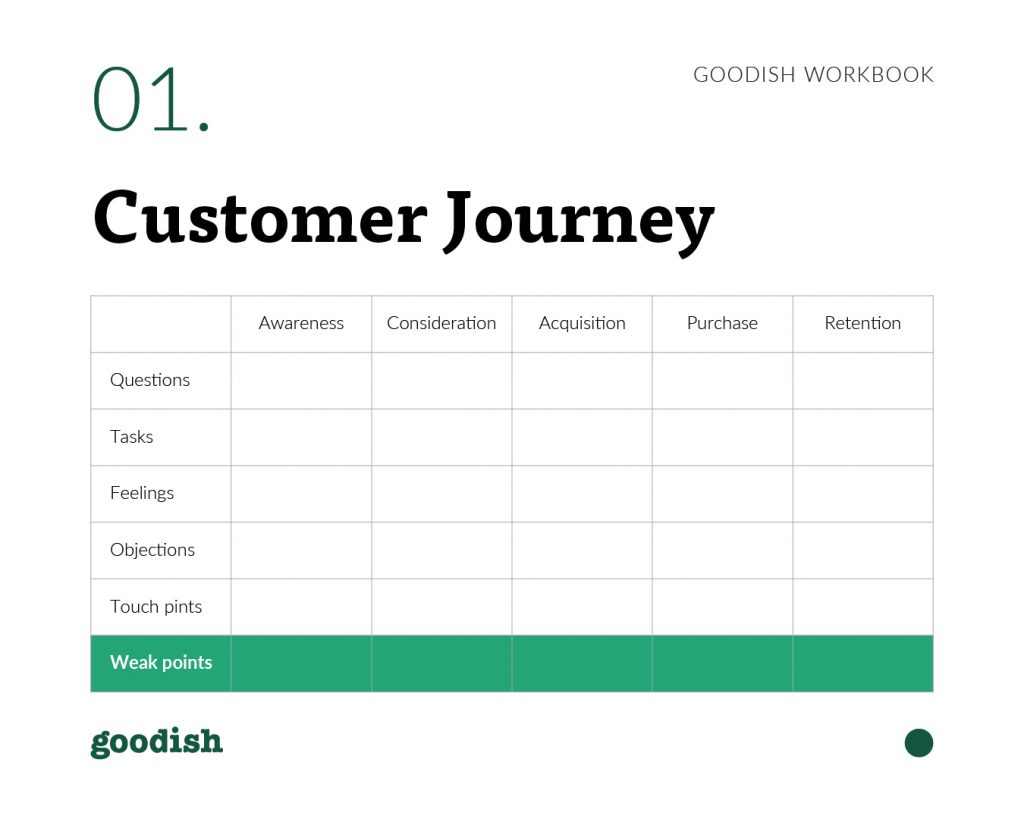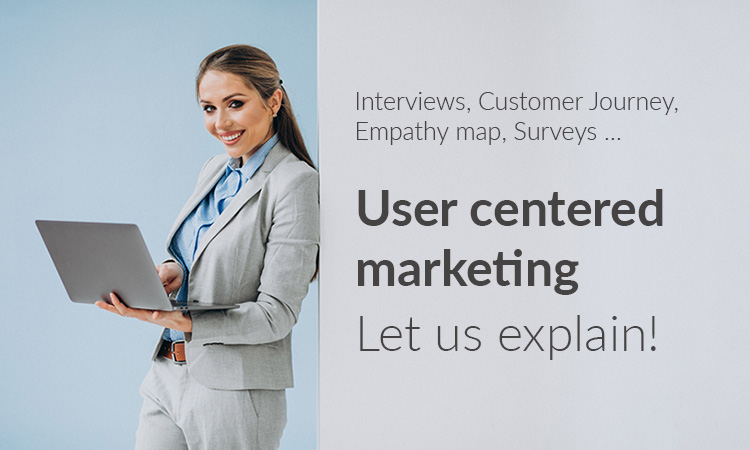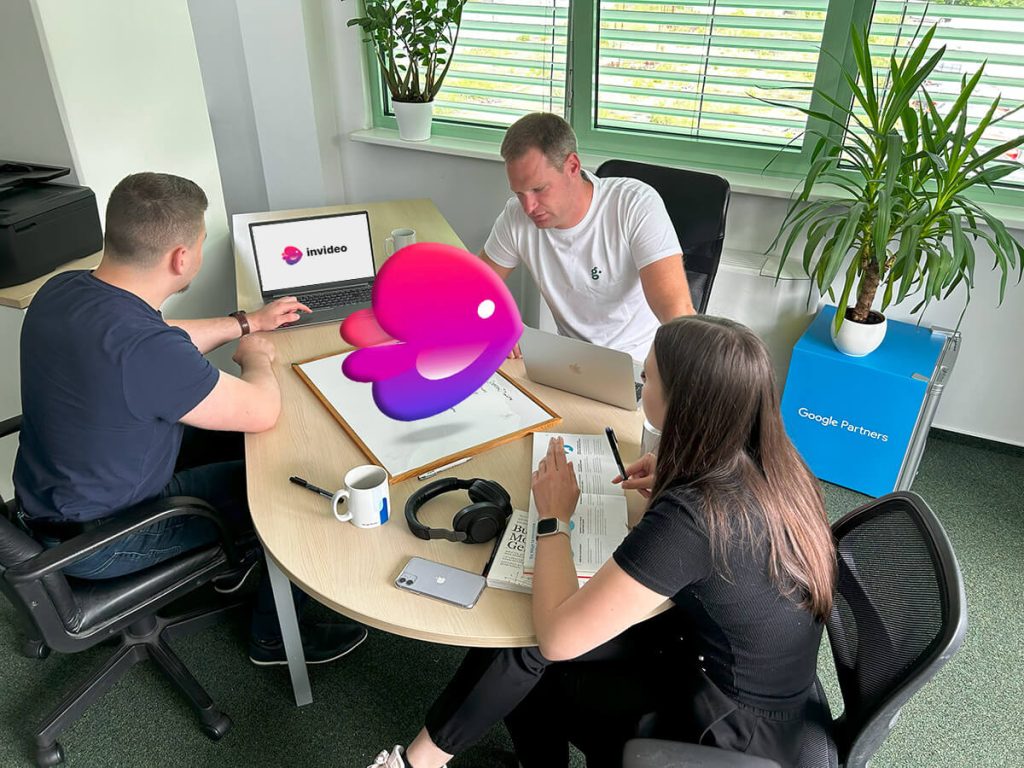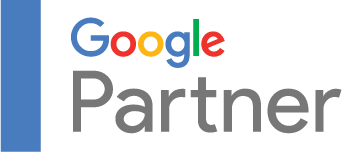If you want to persuade your customer to buy from you, you have to know them first. You have to understand their needs, their pain points, you have to provide answers to their questions and you have to take their feedback into account when creating a new version of your product or service.
Where to Start with User Centered Marketing?
- Start with user research, so you get a basic idea about your audiences and you can come up with some hypotheses for further steps.
- Do user interviews and gain in-depth understanding of who your users are and what they are trying to achieve in respect to your product or service.
- Use surveys to discover what specific tasks users are trying to do in a certain step of the campaign.
- Combine your knowledge and visualize it into a User Journey Map.
- Make it part of the process.
In this blogpost, I’ll shortly describe each of the above steps.
1. User research
It’s simple. Gather all possible information on users you already have or you can get for free. Here are four ideas:
Check existing researches within your organization
Most probably someone already did a research before you. It might be a little out of date and not everything will be relevant to your case. But you have to go over what you already have. It is a good basis to start from and understand where you are.
Interview your employees
Besides checking your organization’s previous work, you should probably pay a visit to every department in contact with your users and ask them a few questions. Your sales team knows which questions users usually ask and what the biggest objections for not buying are. A customer support team can offer amazing insights into existing customers. What are they struggling with? How should you improve the product? What is the next thing users are expecting … Talking to people who work with your customers will help you understand your customers better and at the same time, you will be able to detect blind spots you as an organization have.
Review the data you are collecting on your audience
Use search console to understand which keywords people are using to find you. What kind of questions or topics are people researching relating to your product or service?
Take a look at your Google analytics reports and check which the most popular pages of your website are. What are people giving attention to? What pages are getting the most dwell time?
Check your social media profiles and find the posts that are getting the most engagement. Which topics are good for which social media and which angle you need to address them from.
Check Social Media
Find a few typical representatives of your target audience and study their social media accounts, What are they sharing, commenting, and liking? Are there any topics related to your product or service? Who are their influencers? Who are they talking to?
Monitor your competitors’ social media profiles. Where do they advertise? What kind of posts do they make? Who is following your competitors?
The above steps should give you enough material to create your first versions of personas and customer journey maps.
2. User interviews
If you want to understand users, so that you can persuade them into something, than you have to spend some time with them. Meeting a user in person is a crucial and most important step in the user-centered design. It is the one step you simply cannot avoid. When you were doing initial user research, putting together the first personas and user journeys, you most probably got a ton of questions and assumptions. So it is time to go meet the user and ask them some of them.
How many interviews do you need?
It is often thought you need hundreds of interviews to prove something. In our experience, this is not true. In most cases we get 80% of all insights during the first 5 interviews we are making. So usually, just to make sure we capture everything important, we make 10 interviews. Quality is more important than quantity and you have to make user interviews part of your process. That means you have to do them regularly.
How do you interview users?
- Be specific. Each time you are running a round of interviews, go in with something specific you want to learn, not just questions you want to ask. Plan how you will use insights for improving your campaign, landing page, product etc.
- Do something with the users. Don’t just ask them questions. Prepare a concrete task for them and ask them to accomplish the task. Let them sign up for your product and observe how they do it. Or create a draft of a new email campaign with your user.
- Do one on one sessions. In focus groups, some people fail to express themselves. Loud people tend to dominate a group and you will probably overlook some important opinions.
- Meet them at their home. If possible, meet people in the environment they would usually be seen interacting with your product or service.
- Clear time frame. Tell them in advance how much time you will need and don’t go over your limit. Most of our interviews are between 30 and 40 minutes.
It is not always possible to meet people in person. In cases like that you can use Skype, Facebook messenger, Zoom or other video chat platforms. There are even some professional tools like Lookback, which enable you to record the sessions and make notes.
3. Surveys
Surveys are a very powerful way towards better user understanding. With surveys, we don’t try to answer questions about who our users are, instead we focus on what users are trying to do. What tasks do they want to complete? What are their goals and pain points?
When you are conducting a survey, you must have a very clear idea of what question you want to have answered. What specific actions are you going to do with the answer? How will the results influence your campaigns?
How can you get more people to take your survey?
- Make it short. If possible, ask a closed question with predefined choices. You can add others at the end if maybe someone would like to say something else to you, but in most cases, people will pick one of the predefined options.
- Pick the right moment to ask. People came to your site to complete a task. Let them do the task and ask your question after it. Or at least give them some time before you head to the question. Often the best time to ask is on exit event.
- Explain why you are asking, why you need that information and what you are going to do with it.
- Offer the incentives. Gift card, coupon, or at least a competition (a possibility) to win a gift card or coupon, if the user takes the survey. You can also offer something valuable, like an e-book or free webinar, or a free month of using your product or service.
4. Customer Journey
User persona
Our favorite tool for creating a user persona is Empathy map. The tool has the right questions, like what questions users have, what tasks they want to complete, what is influencing them, and what their goals and pain points are. When planning campaigns, we find those pieces of information way more useful than “traditional” personas with mostly demographic data.
User persona has one big disadvantage. It is only a snapshot in time. You would actually need a new user persona for each step in the customer journey. And that is what the basic idea of user journey is. IF you pay attention to the empathy map and user persona questions, you will find out that they are very similar.
Customer Journey
If you did user research, user interviews, and some surveys, you already learned a lot about your customers and their journey. A customer journey map is a tool that will enable you to summarize your knowledge and to clearly communicate it through your organization.
Throughout the journey, the customer is changing with respect to our product or service. Let’s say someone is purchasing a camera. In the beginning, the user might research different options. Should they buy a GoPro or maybe a better mobile phone instead of a camera? Later on, they might compare different brands, like Canon and Nixon, and different models. Then they will think of what accessories they need if they go mountain hiking or to a family picnic. It is hard to capture all of those states with a user persona. That is why we do a customer journey map: to visualize the key points in the journey. It is not a 100% accurate visualization, it is rather a simplified version of a few ideal archetype customers.
The customer journey consists of two parts. First are steps of the journey, followed by the information you want to collect about each step.
Customer journey steps
Customer journey steps depend on what your customer journey is. But in general, you have two options. You can do an overall journey for all your marketing activities and identify 5 or 6 crucial moments of the journey. And then you can do “zoom in” journeys for specific activities, for example checkout.
Customer journey information
While the steps of the journey depend on your product, the information you want to collect seems to be quite consistent.
- What questions do users have?
- Which tasks do they want to complete?
- What feelings do they have?
- Which objections do they have?
- What *touchpoints do they encounter?
- Weak points (what are our week points at this step)?
*Touchpoints are any interactions they have with your organization (social media, email, website, store visit …).
Of course, this is not the final list, and you can always add or remove something.

Download the Customer Journey Map
Customer journey map usage
You can use it in all kinds of situations. We strongly advise you to have a provisional designer to design it and then you can put it on a wall in your office. That way you are constantly reminded of a user journey.
Week points are telling you where to invest your money in order to improve the user journey. You can also use the map for brainstorming the campaigns or reviewing the messaging. It will be easier to put new campaigns into the right context since you will know what tasks and questions users have at certain points in the journey.
One little trick you can do is add an expiration date on the map. So it reminds you that the map will not be valid forever and that you have to redo the process on a yearly basis.
5. Make it part of a process
Do it regularly. And in all stages of marketing. Are you developing a new email campaign? Create the first draft, jump on a quick zoom call with three or four users and gather some feedback. Not sure if users compare item prices or features? Launch a survey and ask them.
Researching the user, doing interviews and surveys might seem costly and time consuming. But it is actually the other way around. You have two choices: to rely on your or your team’s gut feeling or to back your decisions with some data. Yes, user-centered approach is costly and time consuming, if you look at it in the short term. But in the long term you will fail less often, you will create higher ROI campaigns and landing pages with higher conversion rates. You will save lots of time and those 1% improvements will add up in high profit revenues you create.
Interested in more Marketing Strategies? Let us help you excel.











